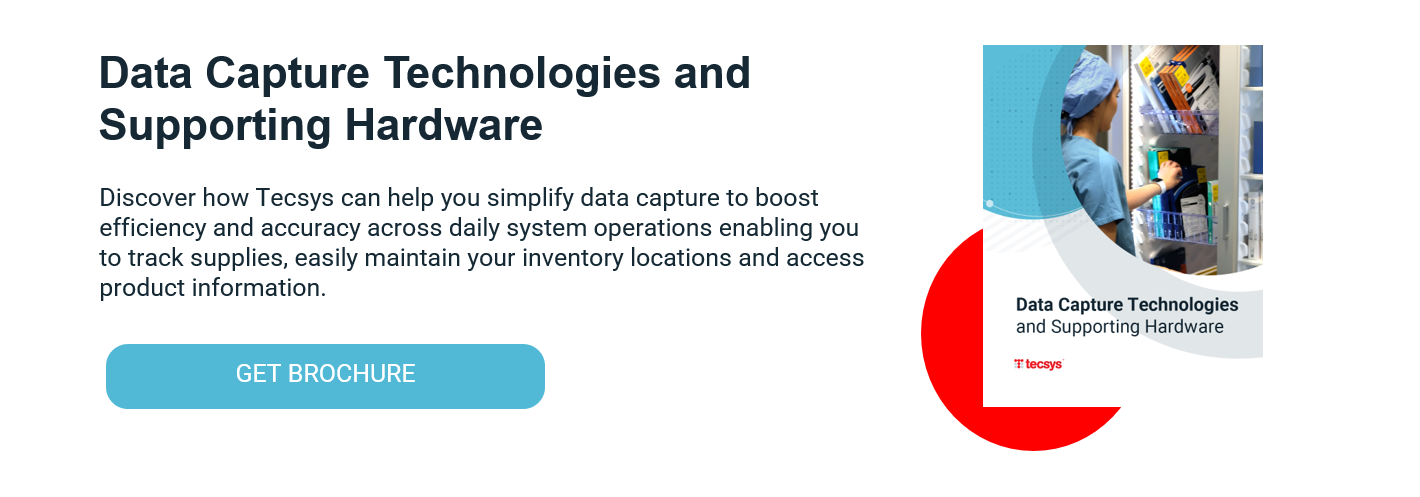Debunking 4 Myths About RFID Inventory Management

This article is a republished blog post by guest author, Keith Hoffman, director of U.S. sales at Terso Solutions.
Terso has completed many significant RFID projects over the years. Inevitably, we face fears and objections when it comes to launching new initiatives around RFID solutions due to a number of misconceptions surrounding the technology. While there is no such thing as a perfect solution, we feel very strongly that RFID can provide significant benefits to organizations, despite the perceived challenges of rolling out a new technology. Let’s take a look at 4 of the most common myths about RFID and how you can effectively approach and ultimately tackle them.
SYSTEM OVERLOAD
Myth #1: RFID is complicated and so is the software
Verdict: False
Fact Check:
One of the major RFID Inventory Management concerns is around the use of various systems to make sense of the data. This concern is certainly valid, as having to navigate multiple software platforms to manage inventory is time consuming at best, and extremely error prone at worst. One of the key ways to overcome this concern is to find a solution that does not lock you into a closed loop. Open platforms with clear, easy to use APIs allow you to control how the data looks and incorporate it into existing workflows where it makes sense. More importantly, RFID can generate a significant amount of real time data. With the proper analytic tools, this will allow you to make faster, better business decisions. It enables you to stock the right product, in the right amount, at the right location. It also lets you see trends in real time, allowing you to adjust to demand signals and increase or decrease materials on hand as needed. In addition, RFID can be integrated with other technologies, such as barcodes. This means that you can use the right technology for the right application, while all data resides in the same platform. And it ensures that you invest in the areas that will provide the best return on your investment.
TACKLING TAGS
Myth #2: RFID is expensive
Verdict: False and it depends
Fact Check:
There are several forms of passive RFID technology on the market today. The most recognizable include low frequency (LF), high frequency (HF), and ultra-high frequency (UHF). In addition, active tag incorporates batteries into the design, amplifying signals. An important part of any evaluation is the cost for this type of hardware. As UHF solidifies its position as the global standard and preferred RFID technology across vertical markets, tag prices continue to drop. UHF RFID tags cost approximately $.05 to $.15 per tag, whereas HF tags range from $.50 to $2.00 per tag. And those numbers only rise when looking at battery assisted active tags, which often have to be replaced at regular intervals. During any technology evaluation, getting a clear picture of these costs is important. When it comes to UHF RFID, the relatively low cost and large market demand will continue to drive it forward as a cost-effective option.
Another important consideration is hardware infrastructure. Adding additional RFID sensors and antennas to a facility does come with cost, including the labor to properly install. In a 2018 report, consulting firm Navigant found that hospitals could save up to 18%, or $11 million a year per hospital, by reworking the healthcare supply chain. Navigant states that is equivalent 160 registered nurses, 42 primary care doctors or the cost of building two outpatient surgery centers. RFID can play a key role in the automation and analytics that positively impact that number, which means the return on investment is clear. And by the ultimate measure, RFID can help drive better patient care with hospital staff spending less time on manual inventory tasks and more time with patients.
THE VALUE OF TIME
Myth #3: Adding RFID to our facility means we have to develop a new workflow
Verdict: False
Fact Check:
At this point, we are often asked about the impact to existing work streams and how much work this entails. The answer varies by application, but is often only incrementally more work, depending on the workflows. The biggest justification you can make at this stage is leading with a clear return on investment from this work. If we tag these products, will we see increased sales? Significant time savings in other processes? Big reductions in expired products? All this data plays a critical role in determining the benefits of a change in process due to RFID tagging.
THE FEAR OF CHANGE
Myth #4: Changing current inventory management will be bad for business.
Verdict: False
Fact Check:
Finally, one of the biggest fears we hear comes down to change management. Any organization implementing major process changes, especially an organization leveraging a new technology for the first time, is going to experience some headaches as they navigate changes, but making the switch is far from impossible. The old way of doing things likely served them well, but the new way can be thought of as complex. And let’s face it, most people do not like change. We have found that organizations that assign a strong change management focused leader fared best in implementing technology like RFID inventory management solutions. This includes someone that can clearly define a compelling business case for change, align the business units that will be involved the change early and often, and drive the project forward. Leaning on a strong business partner with a track record of success and experience to draw from is also a key component. But without a strong change management champion leading the way, projects like this are often on shaky ground.
RFID Inventory Management systems also require a big focus on the application of RFID tags onto existing packaging, or integration into tagging that already exists. There are thousands of RFID label form factors out there and choosing the right format for our application is a big first step. Here is what you should consider:
- Do you have room for a tag on your existing packaging?
- Are any of your products sterilized after being tagged?
- Are you tagging at your distribution center? Or closer to the point of use?
Once you have identified the answers to some of these questions, you can start to formulate a plan for your tagging operations. The bottom line here is that a tag must physically make its way onto a product to be tracked, and it needs to be associated with unique product information. No matter the method, from print and apply, to software user interface, to storing information in tag memory, this is a critical first step.
RFID Inventory Management solutions offer valuable benefits for any organization willing to invest. But the concerns and fears are real, and the most successful organizations take a proactive, informed approach to understanding where they can drive the most successful change across their organization.




